This weekend I’ve been in Devon for the Annual General Meeting of the Small Woods Association at the HQ of the Dartmoor National Park. I drove down on Thursday, the AGM was on Friday, and then there was a woodland visit on Saturday. I’m going to write a separate post about visiting Thomas Hardy’s woodland cottage on Sunday.


I decided to do something a bit different for somewhere to stay and booked an off grid shepherds hut near Newton Abbot: Swallow, one of the two huts of Wood Lane. Similar price to a budget chain hotel but as you can see there’s no comparison.

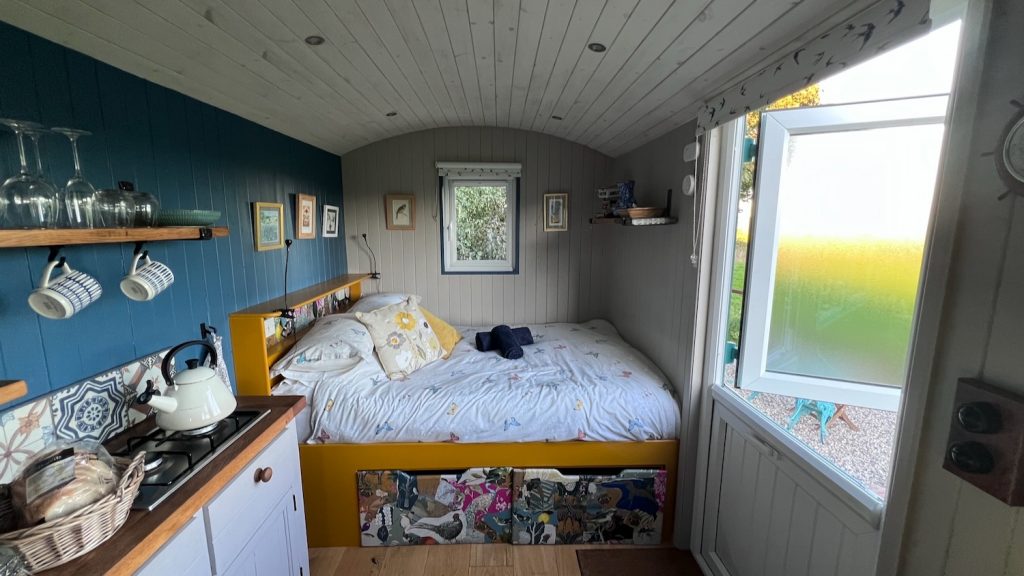




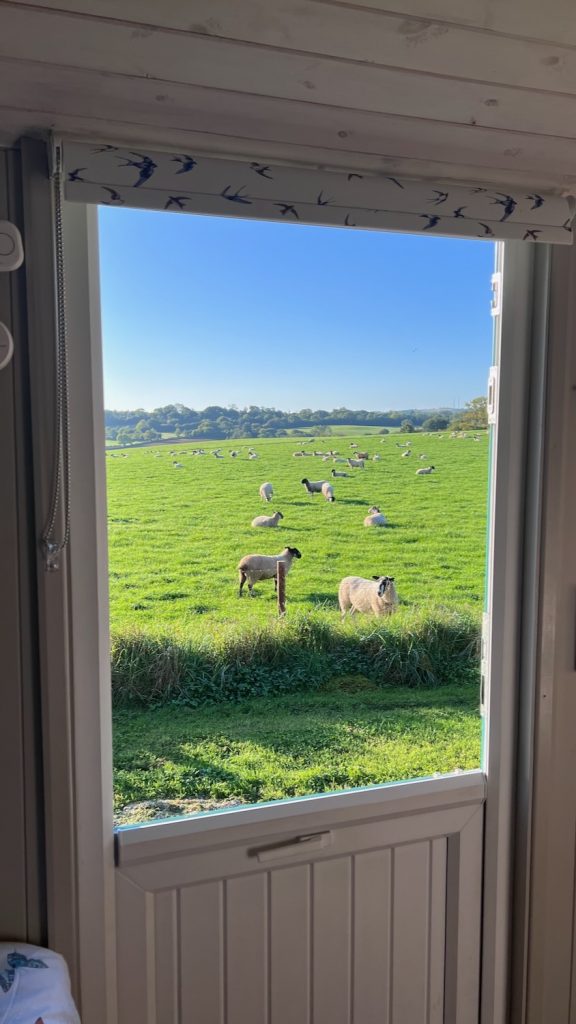
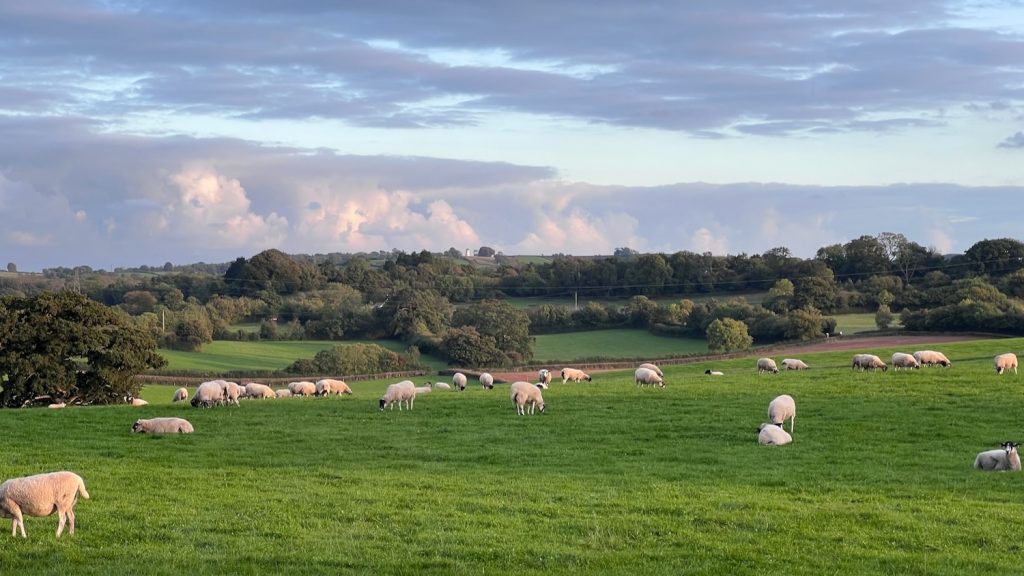

The huts are at the end of path from the lane and have a wonderful view across a sheep pasture, woods echoing to pheasants, and then a valley and hills beyond. All the way to Long Barrow Windmill, which becomes a Light on the Hill when the roof gallery is lit up at dusk. Swallow was very well insulated, panelled inside and metal clad outside presumably with insulation material between. There is a gas hob and a water heater fuelled by gas bottles at the back, and about 800W (peak) of solar panels charge batteries for two huts, and power LED lights and USB charging sockets. The toilet and shower are at the opposite end to the double bed. The decoration is very nice, and basic cutlery and crockery are provided. I got good 5G reception on my phone but I’d brought my Starlink dish that I use at Century Wood with me anyway and I set that up with a leisure battery tucked under the hut.
The Dartmoor National Park HQ is on the National Trust’s Parke estate. As well as the formal Small Woods AGM, there were talks about the current and future direction of the association and the meeting’s theme of Timber and Resilience. One thing that stood out for me was some comments in the talk by Jon Burgess of the Forestry Commission about the impact of climate change on our woodlands. After introducing the four horsemen of this particular apocalypse (drought, storms, fire, and pests/diseases) he said that they may not affect particular woods: sheltered woods in valleys might be quite protected from increased storms for example. It struck me that drought conditions, which has been bad for most of the countryside this year, might actually help Century Wood. As drained marshland, it was once dismissed as waterlogged ground only suitable for poplars. If this year is any guide, then the hazels that I’m harvesting for firewood will do well, and the the firewood will dry well in the Barn during the hot dry weather. My current thinking is to continue relying on natural regeneration and minimal intervention other than creating and maintaining open space, harvesting my firewood, and gradually removing the plantation poplars.



Outside the meeting I had a quick walk through part of the estate, as far as the medieval weir whose stones can still be seen.
Saturday was a Small Woods “Woods in Conversation” visit to Old Leys Wood in Liverton. This has been owned and managed for many years by Peter Cross, and featured in Issue 98 of Smallwoods magazine. In 1995 when he started it was a conifer plantation, but beyond the odd Douglas fir here and there you would never guess. There is now a wider variety of areas, including dense birch-rich natural regeneration, opened areas still overstocked with standards and cut hazel stools regrowing, and patches that now edging towards manageable coppice. I did some rough comparisons with the speed of hazel regrowth on its clay on a long gentle slope vs Century Wood’s rich peaty soil which gets waterlogged over winter but becomes just damp in summer: I really need to appreciate just how wonderfully fertile Century is!
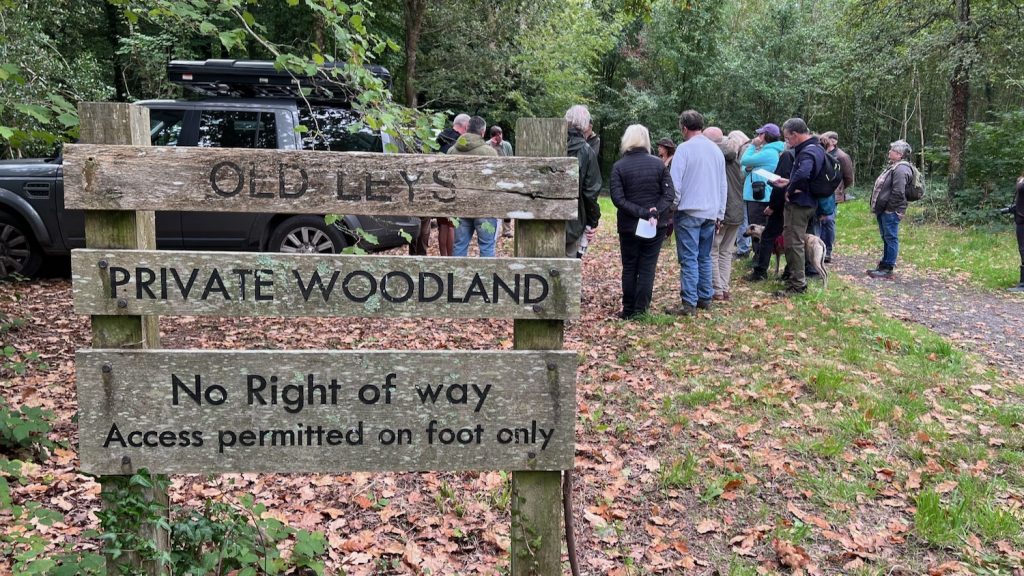

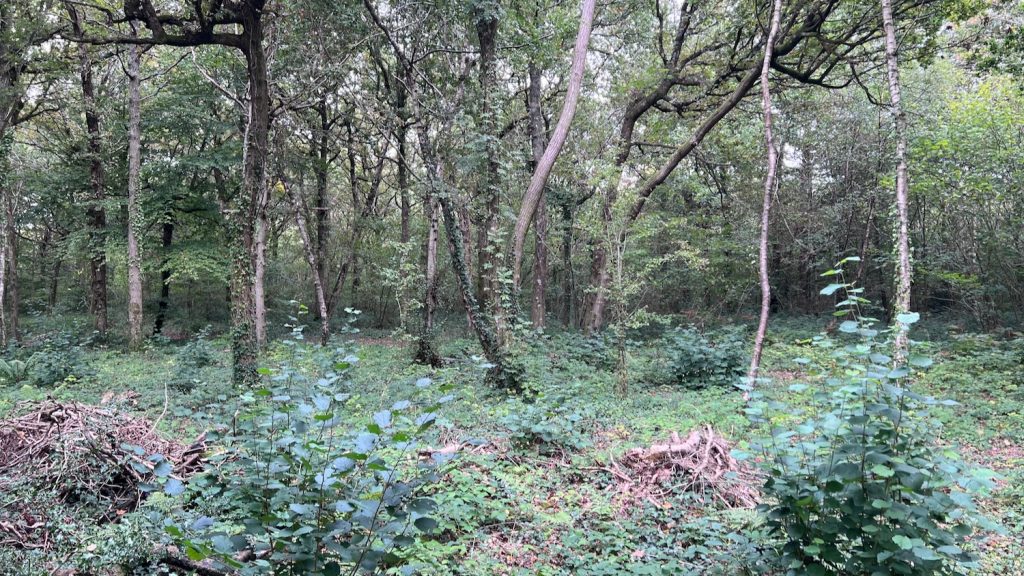
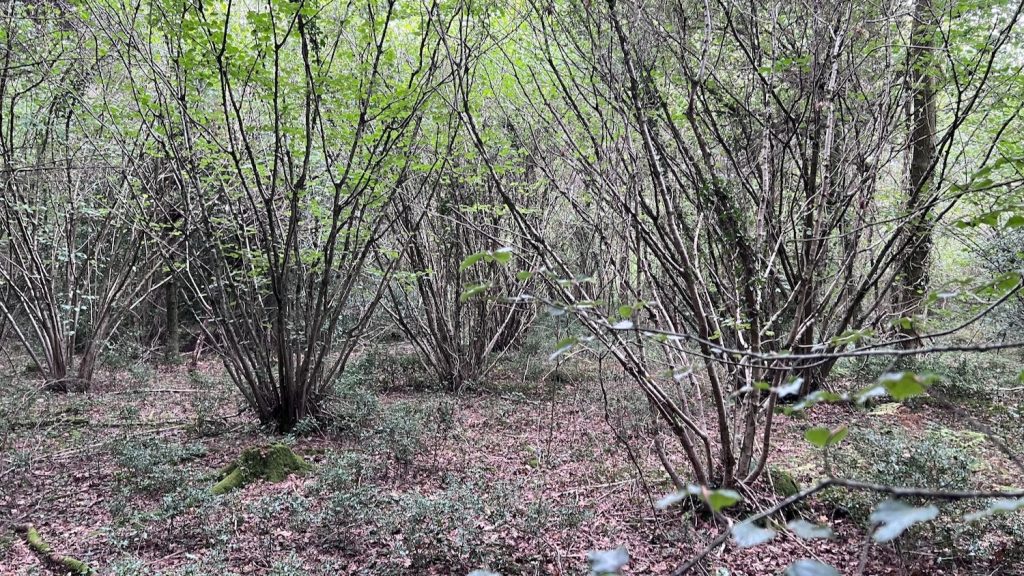



Peter is very generously donating the woodland to the Small Woods Association to be used as their presence on the ground in the South West. One of the discussion topics as we walked round and stopped at interesting points was how the site could be used for the educational events about woodland management and crafts that the association runs around the country.
The AGMs have traditionally been at the Association’s Green Wood Centre near Ironbridge in Shropshire. It was more of an effort for me to get down to Devon but it would have been easier for others this time. I think there were comparable numbers to previous years present and there was some remote participation. The woodland visits following the AGMs do make the AGMs more viable to go to the effort of travelling to, and there will always be other things to see in any particular area. In my case, this was Thomas Hardy’s cottage in Dorset which helped inspire “The Woodlanders”, and which I’ll cover in my next post.
Pingback: Thomas Hardy’s cottage – Century Wood – notes from a Shropshire woodland
Pingback: October at Century Wood – Century Wood – notes from a Shropshire woodland
Pingback: The Little Red Cabin in Illinois – Century Wood – notes from a Shropshire woodland
Pingback: A Shepherds hut and a cabin – Hutters.uk – Iain's blog about hutting